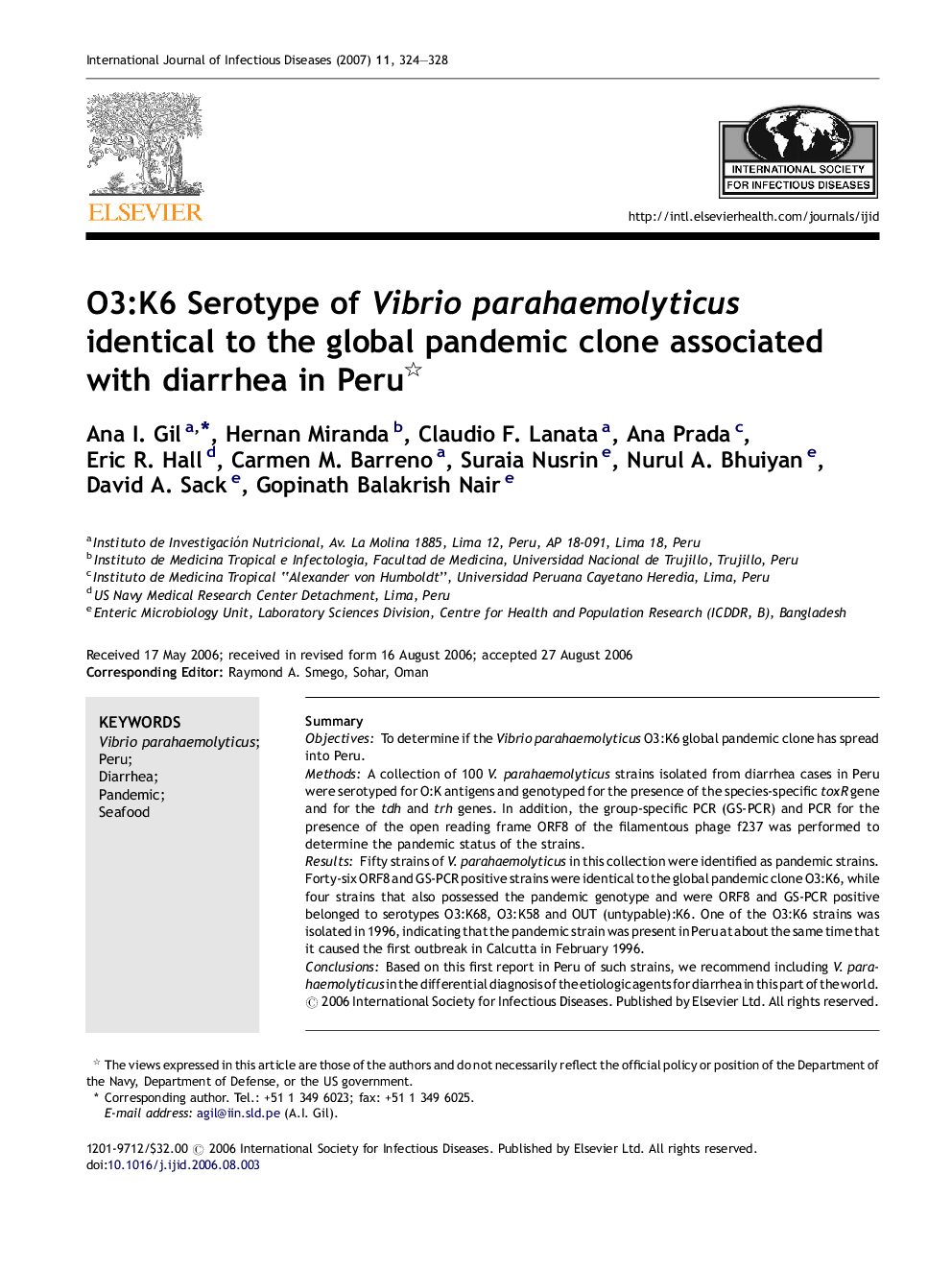| Article ID | Journal | Published Year | Pages | File Type |
|---|---|---|---|---|
| 3365152 | International Journal of Infectious Diseases | 2007 | 5 Pages |
SummaryObjectivesTo determine if the Vibrio parahaemolyticus O3:K6 global pandemic clone has spread into Peru.MethodsA collection of 100 V. parahaemolyticus strains isolated from diarrhea cases in Peru were serotyped for O:K antigens and genotyped for the presence of the species-specific toxR gene and for the tdh and trh genes. In addition, the group-specific PCR (GS-PCR) and PCR for the presence of the open reading frame ORF8 of the filamentous phage f237 was performed to determine the pandemic status of the strains.ResultsFifty strains of V. parahaemolyticus in this collection were identified as pandemic strains. Forty-six ORF8 and GS-PCR positive strains were identical to the global pandemic clone O3:K6, while four strains that also possessed the pandemic genotype and were ORF8 and GS-PCR positive belonged to serotypes O3:K68, O3:K58 and OUT (untypable):K6. One of the O3:K6 strains was isolated in 1996, indicating that the pandemic strain was present in Peru at about the same time that it caused the first outbreak in Calcutta in February 1996.ConclusionsBased on this first report in Peru of such strains, we recommend including V. parahaemolyticus in the differential diagnosis of the etiologic agents for diarrhea in this part of the world.
